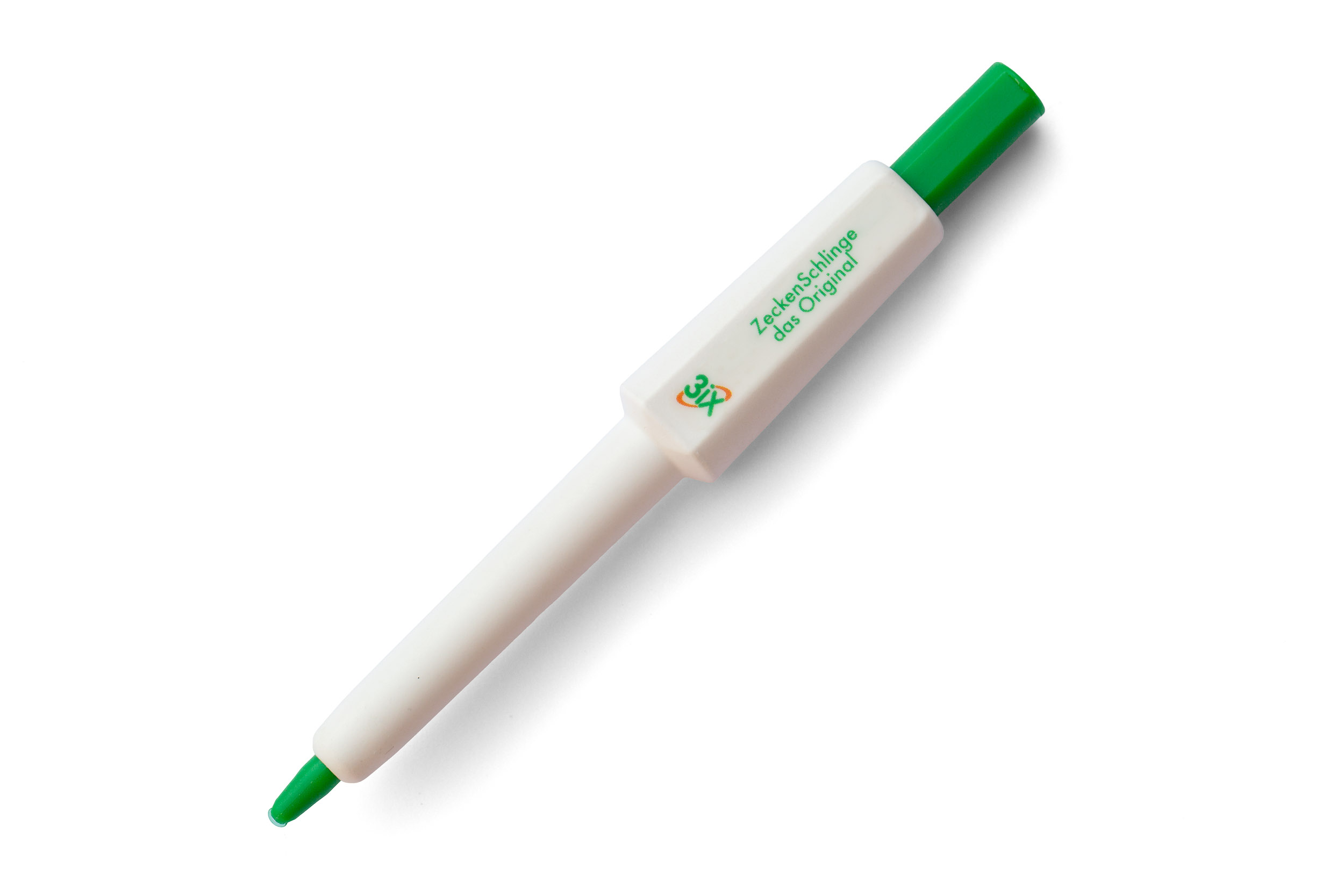Tick research since 2002
Werner Johansson, a volunteer tick researcher, has been painstakingly examining ticks since 2002, primarily to improve Lyme disease prevention. After all, almost everyone knows someone who is affected by it.
There are many well-intentioned recommendations for protection against tick-borne diseases.
I am currently working on my recommendations, which will be incorporated shortly. You will be surprised how different, but logical they are.
I have summarised some of the results of my research for you here:
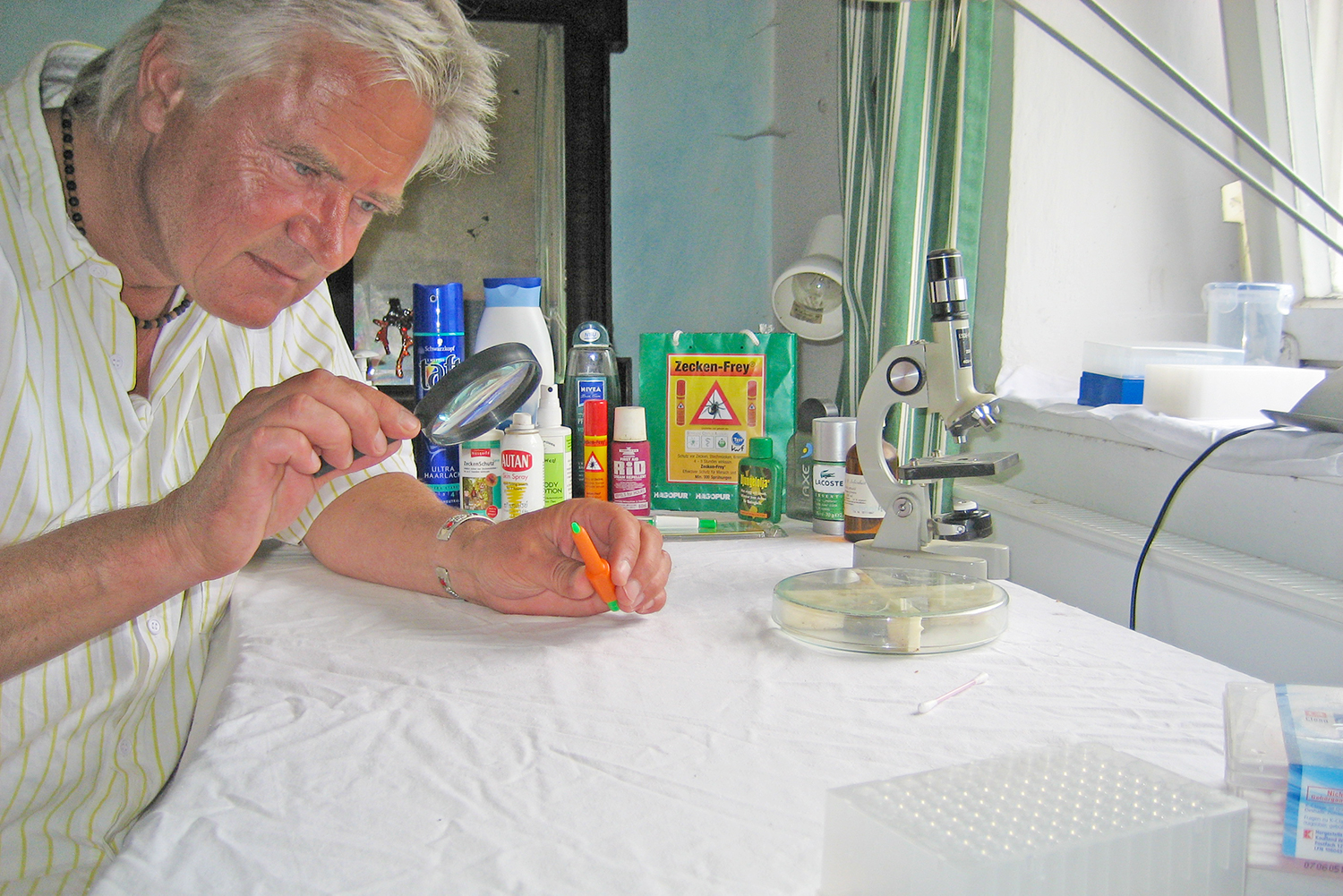
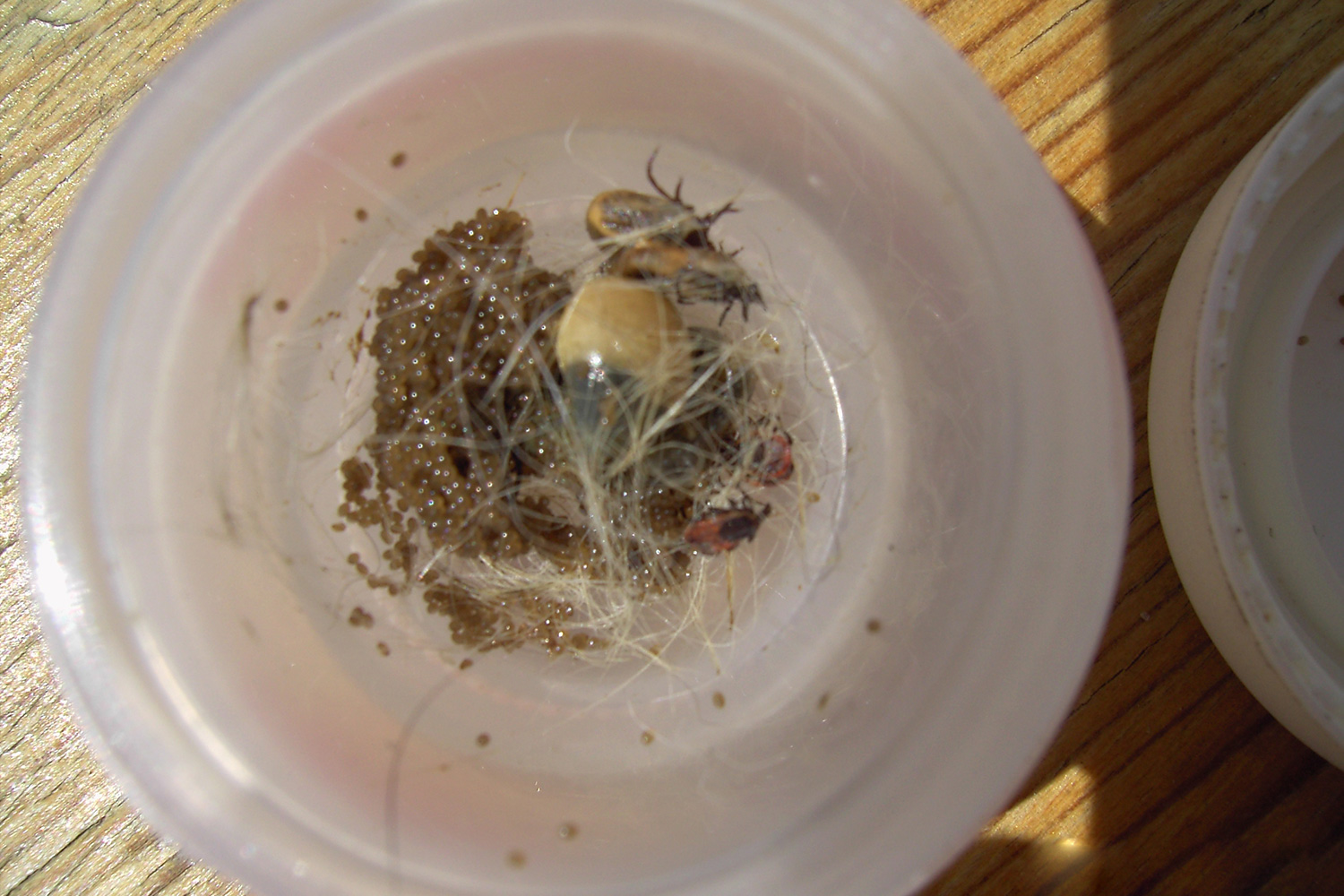
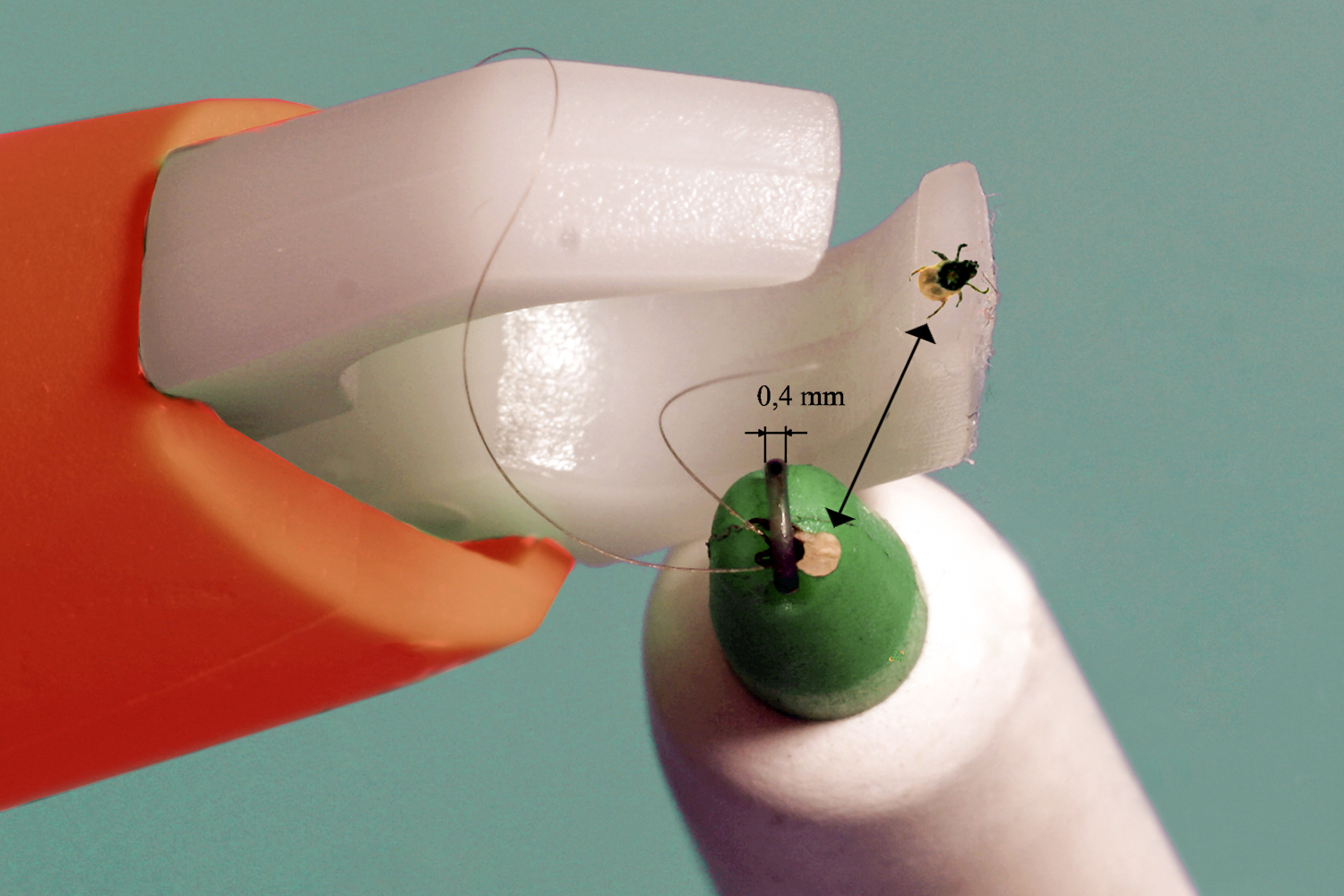
"Alleged secret tips for killing" – are they effective?
- Washing machine: Clothes should be washed at at least 50°C, as ticks only die at 42°C body temperature. The ticks survive 40° without any problems.
- Oven: Preheated at 110°C convection, the animals were still alive after five minutes in a thin traditional jacket! The jacket protects.
- Freezer: Even after more than an hour at -22°C, the ticks that had previously survived the oven test were still alive in the same jacket after thawing (thanks to the jacket).
- In the dryer: After one and a half hours of operation with the setting "cupboard dry and gentle", all the ticks were dead.
- Unter Wasser: Die letzte Zecke starb nach etwa vier Wochen unter Wasser. Das heißt: Zecken möglichst nicht im WC herunterspülen!
- Microwave: All the ticks were dead only after about two minutes. Before that, the container melted!
- My latest and best tip: Ticks in clothing, regardless of size, die within three seconds on contact with 60°C hot water. According to the manufacturers, 30°C laundry will not be damaged when soaked. Loose ticks can simply be placed in a cup of boiling water.

Studies
by the University of Heidelberg, Health departement of Germany, Stanford University USA
Study 1
Transmission of tick-borne diseases, conclusion (english)
Study 2
Transmission of tick-borne diseases, conclusion
Leaflet 2
National working group
What can happen at home?
- The ticks survive at least 3-5 days up to a few weeks, depending on the air humidity
- Laundry pile: Survival rate several weeks if there is something damp in it
- Wardrobe: 3-5 days, as too dry
- Pillow: 3-5 days, too dry - but enough time to catch you.
- Bath: chance of survival several weeks if, for example, there is a damp bath rug in it that gets wet every day and you have a small bath. Of the five ticks I exposed in my bathroom, I unfortunately crushed three, but two laid their tigers on the floor. I cleaned the floor with boiling water afterwards.
- All hungry ticks search for 3-5 days in the house for their victims. I observed a test tick for two hours in the office, running free on the floor. It did not hide at all, even avoided the carpet. In the end, it patrolled the door, exactly where I mainly moved.
- The walking speed is about 5-8m per hour, without interruption. The smaller the flat, the greater the likelihood of being stung. When stepped on, they attach themselves to the victim and run up the leg at an increased speed. It can take a few minutes to reach the harness. I have already tried this. A tick also likes to look for a second victim or bite site, e.g. your partner in bed, if the tick likes it better or the primary victim does not fit.
- Hunters beware: If you are warmer than the killed animal, the ticks quickly swap victims.
- In my opinion, many bites happen at night in bed, where one unconsciously scrapes off the tick's body while sleeping due to the itch. When the person gets sick, he knows nothing about a tick bite.
- A pregnant tick that falls off a pet, for example, hides and looks for moist slits to lay its eggs. I consider the probability of larvae being born in the house/flat to be rather low, but it has already happened with me under observation. The decisive factor is the humidity.
In the car and in the pool: how long do ticks survive?
- In the car: Survived 2 weeks in my car, on the passenger seat. Then I stopped the test.
- In the pool: Caution is advised. They float on the surface and drift until they can cling on.
Are they active in winter?
- Ticks don't know that it's winter. When your body temperature is right, from about 6°C, e.g. due to sun exposure, they wake up and become active, no matter what your thermometer shows.
- Between shade and sun, a temperature difference of 20 °C is not impossible. On 8 November 2005, a beautiful and sunny day, I was walking in the forest and was surrounded by ladybirds, ants and other insects. Why would the ticks be hiding here?
- A lightning cold kills them. When it starts to get colder like normal, they seek shelter early and go into rigidity. Our winters are getting milder and milder and the ticks don't mind.
- They are quite active under the snow, especially in the animal nest.
- My measurements have shown much higher temperatures under the snow than above it. The humidity also suits them perfectly. About 3-4% of all tick bites happen between November and March.

The latest general tips for preventing tick bites and associated diseases
You can also learn specific tips from my lectures, for example for forest workers, hunters, anglers, school hostels, doctors, mushroom pickers, etc.
When you have read it, you will be surprised that my tips are very different from what you hear in the media. There, the tips are usually just copied from each other - my findings come from my voluntary tick research since 2003.
Regular scanning
It's much too late to start screening in the evening. TBE, for example, is transmitted immediately when it bites. If you cross a risky place (see C), you should check the front of your trousers every 1-3 minutes. This only takes 2 seconds, as the ticks do not have time to crawl elsewhere and you only need to check the front of your legs first. For example, if I have passed a narrow forest path where the grasses hang over it and touch me, I check immediately. That has often helped me.
If it starts itching anywhere on the body - even in bed at night - and a black spot is visible on the itchy spot, it is 100% a tick. Immediately remove it correctly (unscrew it) and keep it for a possible laboratory test. In small children and pets, ticks are often found on the head under the hair. Please check immediately!
In the evening, you should also check yourself. If you discover a very small tick larva (they only have 6 feet instead of 8, and are only 0.4 mm in size, for which you need a magnifying glass), you should be extremely careful, because they rarely come alone. (You were near a tick nest). Immediately change your clothes and enclose them in a plastic bag and later immerse them in 60°C hot water. Shower the affected person with a hard jet and search again. Alternatively, wash the clothes in the washing machine at at least 50°C (or in the dryer at cabinet dry).
Brush pets daily, preferably directly after a walk, to catch male ticks as well. Otherwise they will remain in the fur for weeks and possibly fertilise new bloodsuckers. A fully sucked adult tick dies if it is not fertilised! Otherwise it can lay several thousand eggs in your home, which is why pets should definitely not lie in bed at home. Otherwise the tick will move on to the warmer victim, for example a child, and continue sucking.

Especially such places in forests are very popular with ticks

Ticks also prefer to live in tall grass near bodies of water.
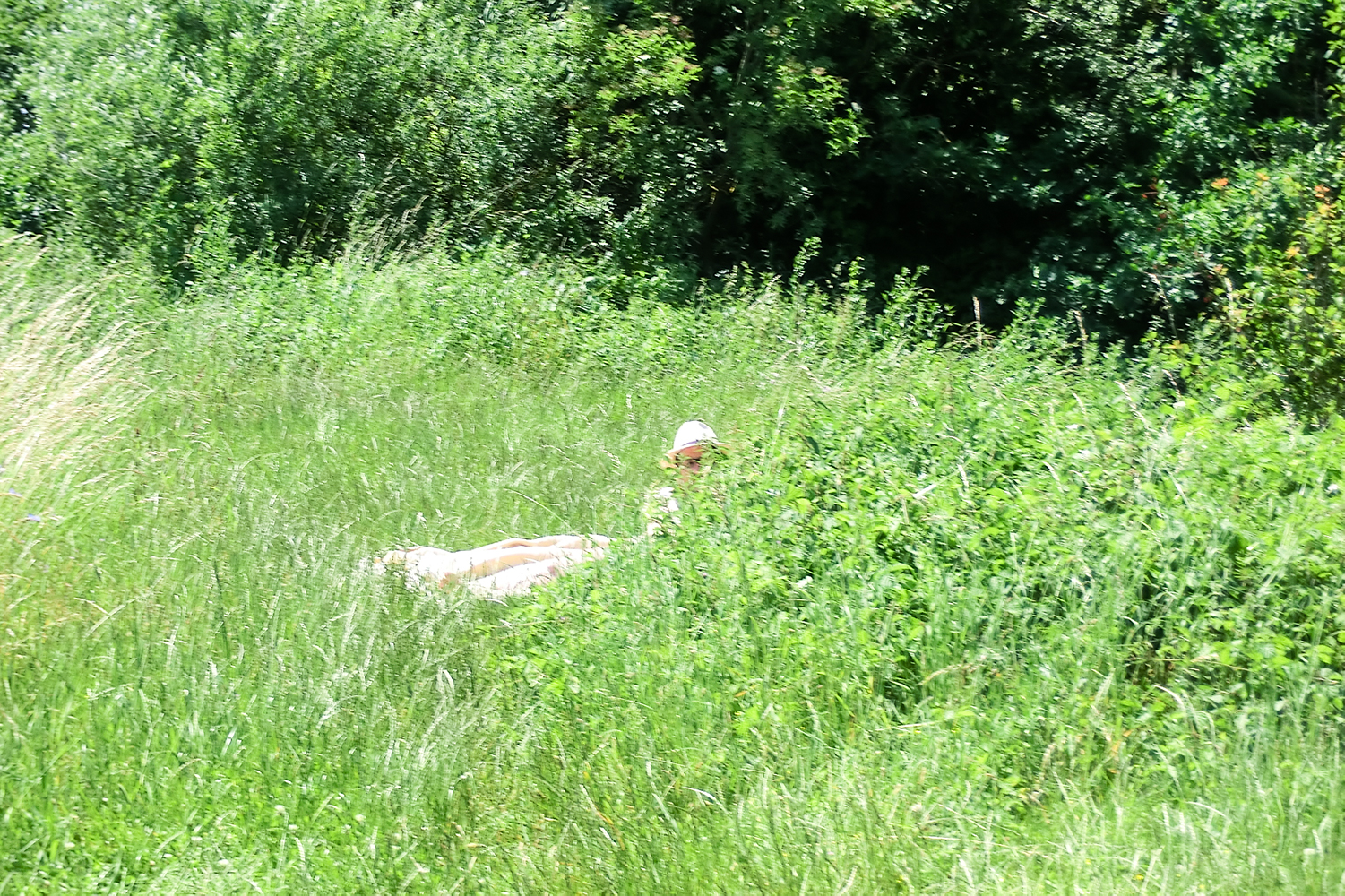
If you are lying in tall grass, you should regularly check yourself and remove ticks.
When is it dangerous?
Especially in spring, when it is humid and warm enough for ticks. It is less dangerous when there is a risk of forest fires. Since the ticks hide to seek shelter. After a few days of dryness, it becomes highly dangerous after a rain in spring, when the body temperature of the tick is above 6°C. The only decisive factor is the body temperature. Only the body temperature of the tick is decisive, not what is written on the thermometer. When the night temperature reaches an average of 6-8°C, it becomes even more dangerous. At this time, the ticks are active for 24 hours and a lot of larvae are produced. In high summer it becomes less dangerous, depending on the weather. I always check with dog owners I meet to see what the situation is where I'm walking.
Where is it dangerous? Everywhere where you secretly go to 'bite', e.g. also along the motorway, directly next to bathing lakes and forest paths, in the undergrowth, under leaves, (there are the larvae), on low leaves in the forest, (there are the nymphs and adults), in your own garden in the shade, (a lot of bites happen there), where wild animals move, such as hedgehogs, mice, deer, foxes, as well as domestic animals.
What to do? Keep the grass low in your own garden, on playgrounds, at bathing lakes, etc., so that it dries out quickly. Before sitting down, pitching a tent, etc., always consider whether the place might also appeal to ticks. Then scan the site with a white bath towel beforehand. If there are small black spots on it, see if they move. Ticks have a very strange and slow way of moving. If there are ticks on the towel, the place should be avoided.


Remove ticks correctly
Always have a suitable tick remover with you, as well as a small container and a small sealable plastic bag. Be careful, most tick removers are unsuitable. For example, they are too coarse (squeezing should be avoided), you can't get everywhere with them, or they are unsuitable for turning. The sooner the tick is removed, the better. Every minute counts! As a rule, a tick releases the pathogens when its abdomen slowly becomes full, or it is stressed by an incorrect and slow removal, such as when being pulled. Watch out: Nymphs (ticks directly after the larval stage) are often more dangerous than adults (fully grown ticks), as the abdomen fills up faster and pathogens are thus transmitted more quickly! Always pick up the tick after removal, see "The tick test").
Why twist? Because of the barbs on the suction tube, the tick should be twisted out. These come off faster and better than when pulling. This is especially popular with small children and animals. I only know of studies, such as from the UNI Vienna, that recommend twisting. As a tick researcher, I don't know of a single professional argument or corresponding study for "pulling". The statement that "ticks should not be removed because they have no threads" is not technical, just ridiculous. It is even claimed that "twisting" is harmful, but without a single professional explanation.
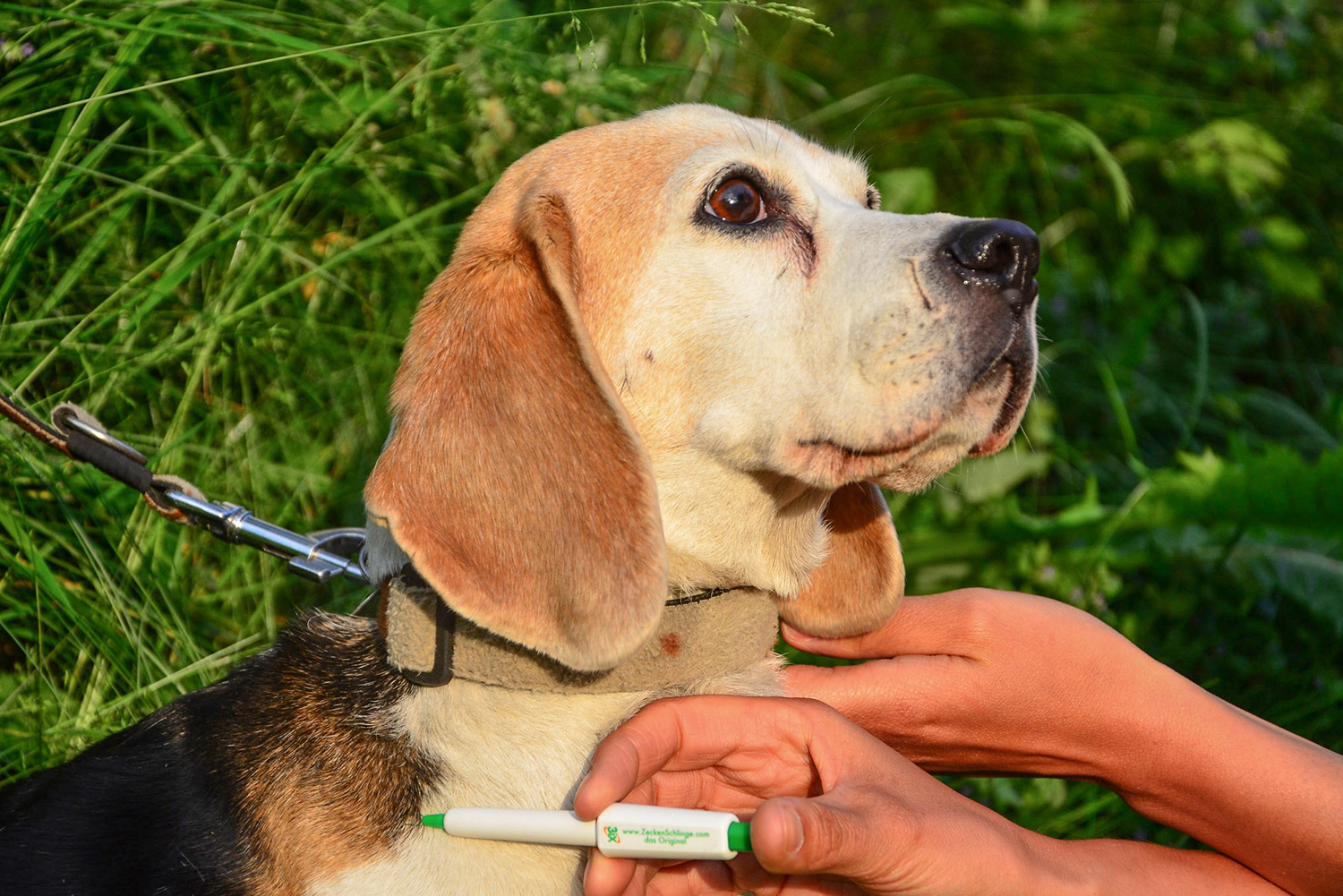
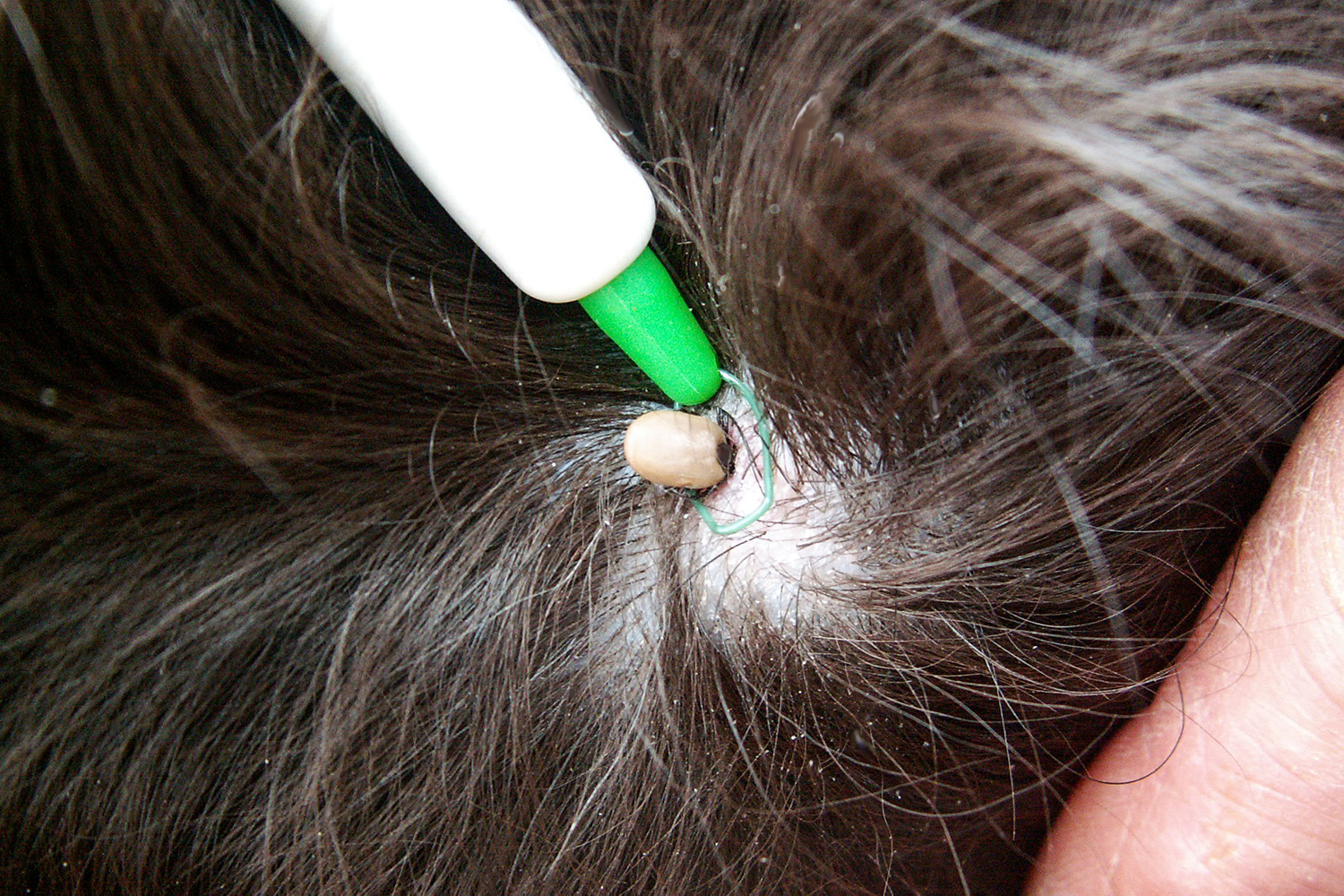
The tick test
Why test the tick? Almost every third tick has various Borrelia pathogens and many have many others such as Anaplasma, Rickettsia, Babesia and Bartonella.
A PCR test is cheap and, in contrast to a later blood test, safe. Among other things, this serves as proof for accident insurance and for the employer, for example for forest workers (be sure to check whether your accident insurance covers tick bites). The test is also an important indication for the doctor if you become ill, even very long after the bite!
Symptoms like EM rarely occur and immediate treatment regardless of the symptoms brings the security of not getting sick later. A later blood diagnosis is very difficult, uncertain and expensive. It is also possible that Borrelia bacteria have hidden themselves before antibiotic treatment is started. They survive the treatment and often only become active again when the treatment is finished. More info at www.arminlabs.com.
Caution "tick vaccination"! The word should be banned in advertising, as the vaccination only prevents the disease TBE, of which there are very few cases in Germany compared to Lyme disease.

